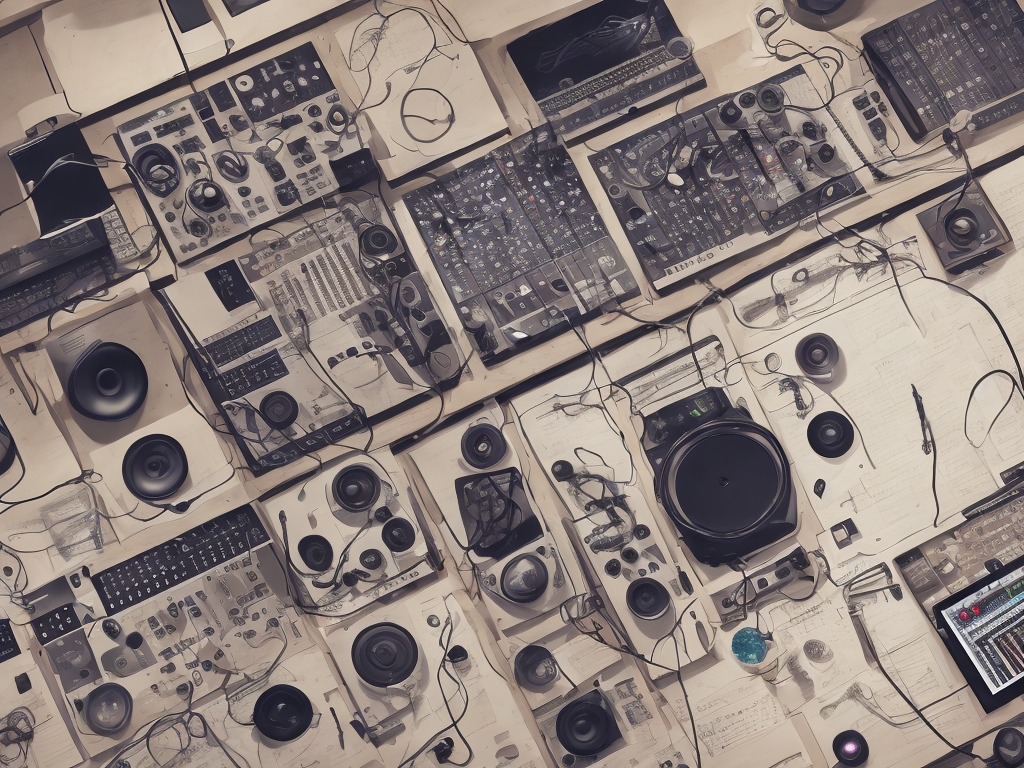
Mixing music is the art of creating a balanced and polished sound by combining different parts of a song. It is an essential process in music production and can make a significant difference in how the final product sounds. Mixing music is a complex and creative process that can take years to master. In this article, we will provide you with some basic guidelines to help you get started on mixing music.
1. Set the tone
Before you begin to mix music, make sure that you are in the right frame of mind. You should be in a room that is comfortable and quiet, and you should have a clear idea of the sound that you want to achieve. Take a few moments to listen to the song that you will be mixing, and try to visualize the sound that you want to create.
2. Start with the basics
The first step in mixing music is to adjust the levels of each of the tracks. You should start with the drums and bass first, as these are the foundation of most songs. Once you have set the levels for the drums and bass, move on to the guitars, keyboards, and vocals.
Make sure that each instrument is clear and is not competing with the others for space. Remember that the goal is to achieve a balanced and polished sound, so take the time to adjust the levels until you are satisfied.
3. Use EQ to sculpt the sound
EQ (Equalization) is a powerful tool that can help you to shape the sound of each instrument. The goal of EQ is to highlight the best qualities of each instrument and remove any unwanted frequencies.
For example, if you want to bring out the warmth in a guitar sound, you can boost the midrange frequencies. Similarly, if you want to make a bass sound more defined, you can cut some of the low frequencies to remove any muddiness.
Remember that EQ should be used in moderation. It is easy to overdo it and create a sound that is artificial and unappealing.
4. Add effects to enhance the sound
Once you have set the levels and sculpted the sound with EQ, it's time to start adding effects. Effects such as reverb, delay, and distortion can be used to add depth and character to the sound.
Reverb is a particularly useful effect, as it can make a track sound as if it was recorded in a particular space. For example, adding a large amount of reverb can make a vocal sound as if it was recorded in a concert hall.
When using effects, keep in mind that less is often more. Too many effects can create a cluttered and confusing sound. Try to use effects sparingly, and only when you feel that they are necessary.
5. Use panning to create space
Panning is a technique that can be used to create space in a mix. By panning each instrument to a different position in the stereo field, you can create a sense of depth and separation.
For example, you can pan the drums to the left, the bass to the center, and the guitar to the right. This will create a sense of space in the mix and make each instrument stand out.
6. Listen critically
One of the most important skills in mixing music is the ability to listen critically. It is essential to take the time to listen to each track individually, as well as how they sound together as part of the mix.
Pay attention to the details, such as the timing of each instrument, the placement in the stereo field, and the overall balance of the mix. Make adjustments as necessary until you achieve the sound that you want.
7. Reference your mix
Once you have created a rough mix, it's a good idea to listen to it in different environments. This can help you to identify any issues that might not be apparent in your mixing room.
For example, listening to the mix on a pair of headphones or in a different room can help you to identify any frequencies that are too prominent or too weak. Use this feedback to make further adjustments to your mix as necessary.
Conclusion
Mixing music is a complex and creative process that can take years to master. The tips outlined in this article are just a starting point. The key to becoming a great mixer is to practice, listen critically, and develop your own techniques and style.
Ultimately, mixing music is about creating a balanced and polished sound that brings out the best qualities of each instrument. By following these basic guidelines, you can start to develop your own mixing skills and create great-sounding mixes.
 Self-Instruct
Self-Instruct